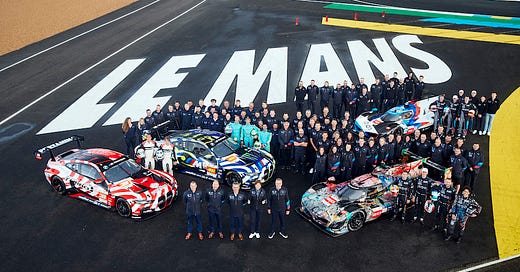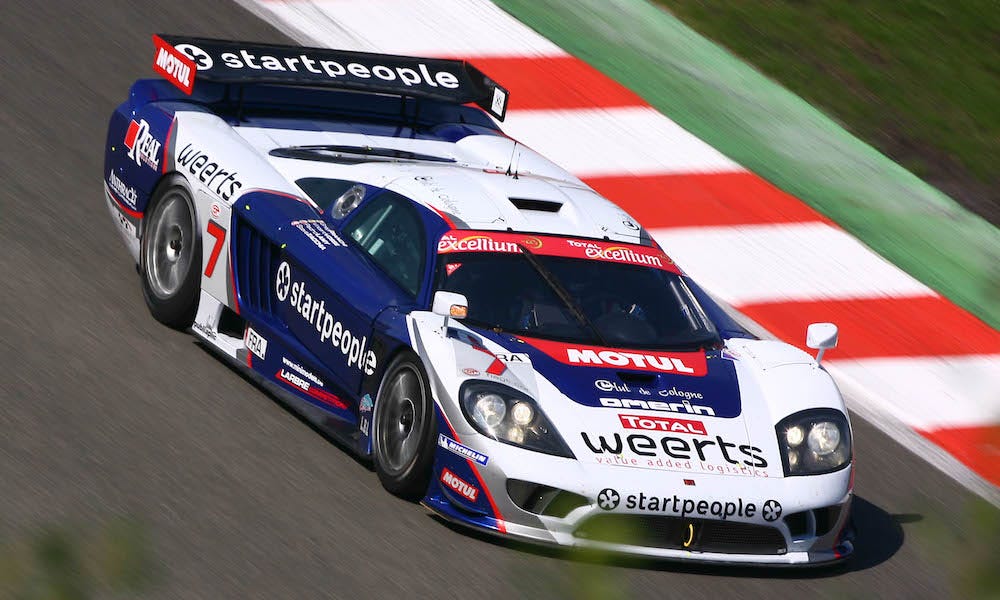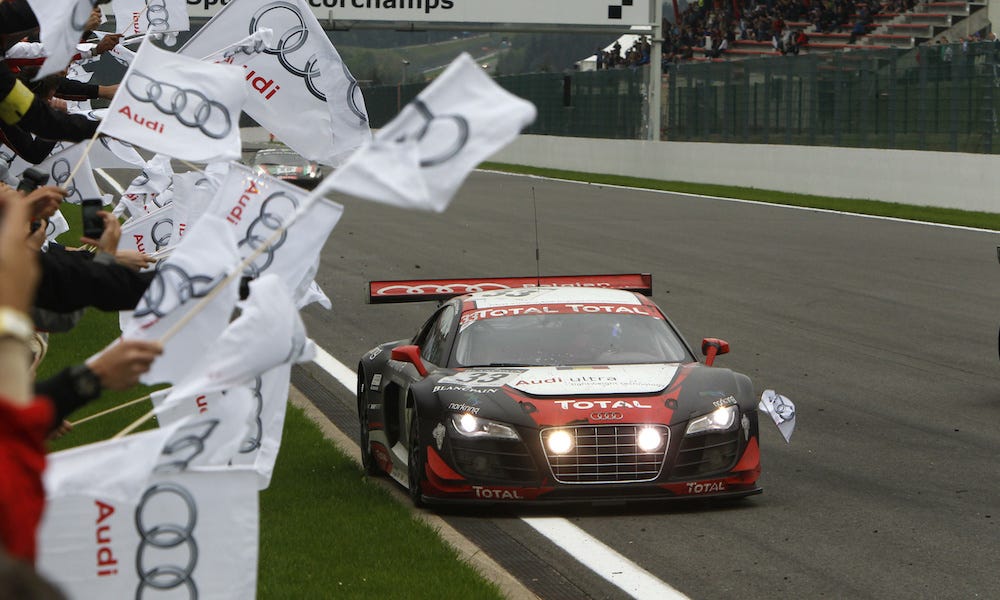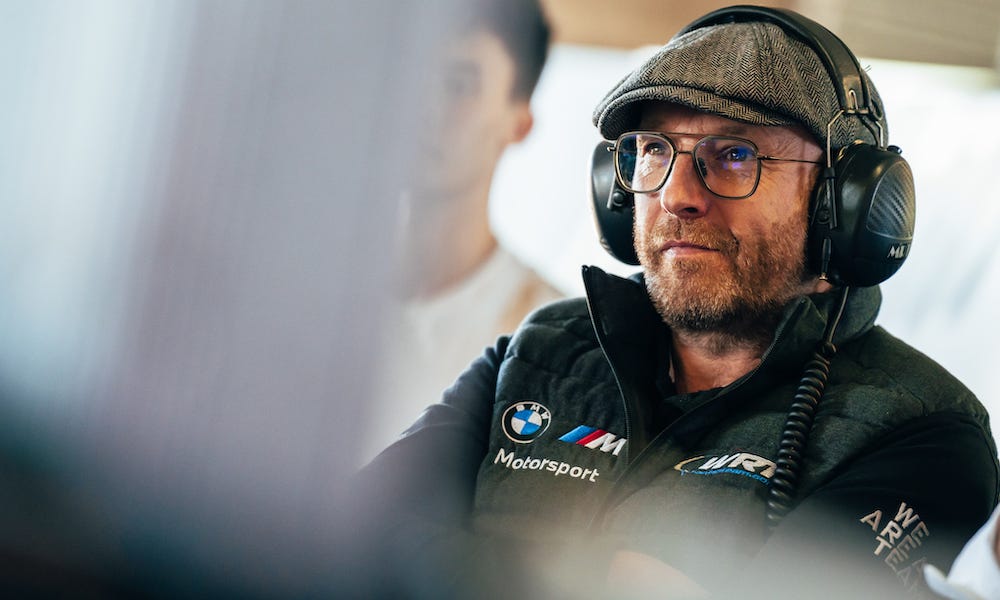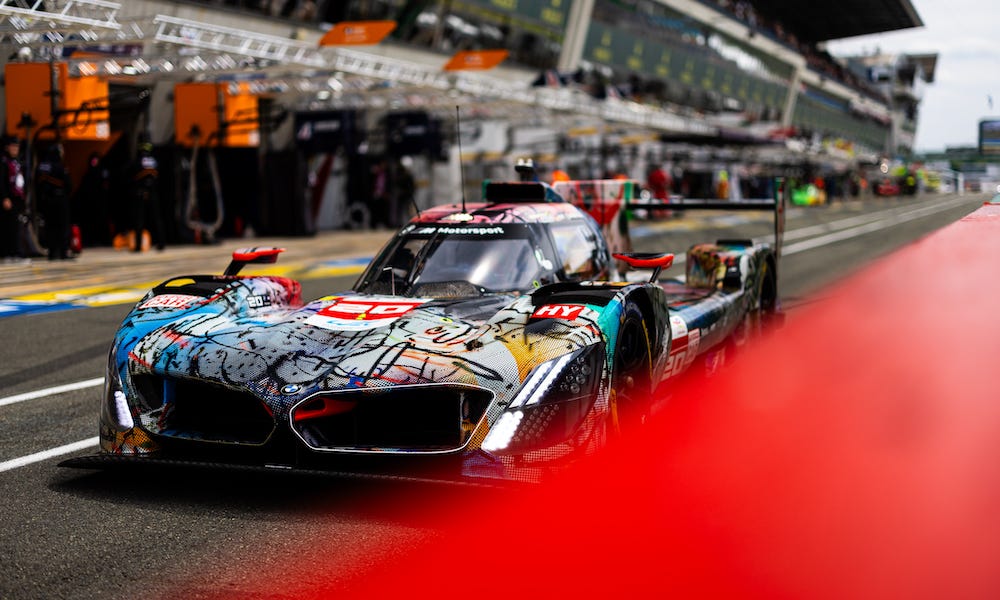Insight: The Belgian Powerhouse Squad Celebrating its 15th Birthday
Sportscar365 looks at Team WRT’s rise up the ranks of global sports car racing…
August 2nd, 2008. Steve Zacchia’s No. 7 Larbre Competition Saleen S7-R GT1 takes the checkered flag in morning warmup for that year’s edition of the 24 Hours of Spa.
Pedro Lamy put the car on pole earlier in the weekend with a new lap record. A promising day beckons for the French squad. But as Zacchia approaches the Eau Rouge-Raidillon complex on his lap back to the pits, it all goes wrong. The Swiss driver crashes hard.
What’s left of the car is barely recognizable as a Saleen. There’s no way damage this extensive can be repaired in five hours. The team pulls down the shutters on the garage. Game over.
It was undoubtedly a bad day in the office for all involved. However, as fate would have it, that unfortunate turn of events would soon lead to bigger things for one particular member of Larbre’s driver lineup.
Vincent Vosse was in the middle of a full-season FIA GT Championship campaign with Larbre and co-driver Greg Franchi, with backing from Belgian entrepreneur Yves Weerts. Lamy and Zacchia joined them at Spa, although the latter’s crash meant the No. 7 Saleen missed Spa as well as the two next rounds in Bucharest and Brno.
However, Vosse and Weerts did travel to Bucharest for what would be the beginning of a journey that eventually led to the creation of one of the most successful teams sports car racing has ever seen.
“Michael Bartels [Vitaphone Racing team owner] invited us there because we had some guests,” Vosse recalled speaking with Sportscar365. “Then Yves' idea was to maybe buy one of the Maserati MC12s, leave it to the team, and I would race that car, like I did in the past. At the end of the day, this never happened, because I could not see GT1 still having many, many years [left].
“So I decided to tell Yves not to do it. But then, a few months later, it was clear that Audi would arrive into GT racing, with the GT3 car. That's where we started from. We decided to make a team together, because I still had a good connection with Dr. Wolfgang Ulrich [and] with Audi Belgium. So we decided to go ahead.”
W Racing Team, or Team WRT as we know it today, was founded on August 10, 2009, meaning that the Belgian powerhouse outfit turned 15 years old last month.
It’s come a long way in a decade-and-a-half. Currently, it operates the factory BMW Hypercar program in the FIA World Endurance Championship and races in Fanatec GT World Challenge Europe powered by AWS and the Intercontinental GT Challenge.
Contrast that with its beginnings, which were humble yet successful. With three Audi R8 LMS chassis, it embarked on a dual campaign in the Belcar Endurance Championship and FFSA GT Championship and made its debut in the 24H Spa. Vosse himself drove in that event alongside Franchi, Frank Biela and Frank Stippler - his last start in the Belgian endurance classic.
“Then in 2011, we were chosen as a factory team for Audi for the 24H Spa,” Vosse said. “We won the race and it went from there.”
From there it went, indeed. WRT’s list of successes is as long as it is impressive. Two victories in the 24H Spa. Overall wins in the Nürburgring 24, Bathurst 12 Hour and Suzuka 10 Hour and a class win in the 24 Hours of Le Mans.
Its LMP2 effort secured two WEC titles and one European Le Mans Series crown. Its Fanatec GT Europe exploits have resulted in a plethora of titles, both in Sprint and Endurance Cup.
So what has been the key to that success? Kelvin van der Linde, who raced on and off with the team from 2015 until it switched from Audi to BMW at the end of 2022, thinks a lot of it comes from building from a “solid base” and a high level of continuity and low turnover in its workforce.
“I think the strength is that they invested a lot in having a solid structure early on,” van der Linde told Sportscar365. “When you're just constantly building over the years but you've got a very solid base and you're just adding building blocks every year, you're going to be ahead of your competition for a long time to come.
“Everyone is trying to catch up with that and I think that's something that I think is really important. What gives them that big advantage is still nowadays even when they change manufacturers, the structure which is still in place. Everyone kind of knows what their job is in the whole big chain of things.
“The structure helps you in developing a new car. A lot of people that I work with are still there so you have continuity with people, which builds a lot of trust. When you always have new people coming in, you tend to lose a lot of information. So if you have a lot of freelance workers, they go to other teams [and] they spread information.
“Whereas [with] WRT, a lot of engineers I worked with are still there. They're still loyal to WRT so it gives you, first of all, a group of people that trust each other, that work together for a long time. Also, you keep your information that you develop within your team and it's not just kind of going viral.”
That focus on staff strength is a topic that comes up frequently when you ask around the paddock to see what makes WRT tick.
Current Heart of Racing Team driver Alex Riberas, who drove for the Belgian team in 2018 and 2019, believes that these decisions have led to WRT becoming the benchmark in GT3 racing.
“They are an incredible team and there's a reason for that,” Riberas said. “The way they operate, the way they work. The work ethic is incredible. So they pretty much set the standard for the rest of the teams. I think they have probably been the reason why everybody has stepped up their game a lot, especially in GT3 racing.”
Current Hypercar driver Rene Rast added: “I think they do the racing properly, which means they don't hold back on resources, on manpower. Everything is always perfectly prepared. They always have very good people, they have a lot of people.
“I think budget is obviously a big reason why you have good quality of people and good quality of parts and manpower. They just always find the right people who want to work for them. Because the engineers and the mechanics, they obviously also know that at WRT normally the quality is quite high.
“And they can win races, so it's like a positive circle. People want to work for them and they deliver very high quality in everything.”
When presented with the same question as Van der Linde, Riberas and Rast, Vosse himself offered a similar explanation. “I would not have thought that 15 years later, we would be where we are,” the Belgian reflected.
“At the end, I think the thing behind [it] is to have the right people around you. I’m not a technician. I'm trusting people that I work with. I don't get involved in anything technical.
“I'm discussing the general thing. I like to understand what doesn't work or what works because I have a lot of experience. The successful thing is to be surrounded by the right people and to trust them and to give them the right flexibility, working ethic and to trust that mix between young and very experienced people.
“Like we still have Pierre Dieudonne with us. Pierre is 77. So then you have young guys working with him, learning. All of this together makes the team special.”
Vosse might like to say he’s hands-off in areas that are not his expertise, but when it comes to driver signings, it can be quite the opposite. At least, that’s if a certain nine-time motorcycle world champion is to be believed.
“For me, the decision at the beginning was difficult. I know the MotoGP paddock very well, but I don't know this type of racing,” Valentino Rossi told Sportscar365. “Vincent made the difference, because he came to me in Tavullia and he always spoke about racing and not about PR.
“When I spoke with other manufacturers, everybody was very interested to have me but because I'm Valentino Rossi. This made the difference with Vincent. Because he came to me, he gave me a clear program and also he put me in the car with very top drivers so I can learn.
“This is what makes the difference with WRT. They are very concentrated on racing, on what happens on the track and this is what I like.”
WRT is currently in the midst of its second season with BMW after its highly publicized breakup with Audi at the end of 2022. The story is well-known by now: although never formally announced, the team had been chosen to lead the Ingolstadt marque’s LMDh program until it was abruptly paused.
Vosse and WRT, at that point already having invested in an LMP2 effort to prepare for a graduation to the top class of sports car racing, went looking for alternatives and linked up with BMW instead.
The switch to the Munich brand marked a new chapter for the team, which has so far included wins in the Hankook 24H Dubai, Kyalami 9 Hour and Indianapolis 8 Hour, a podium in the 24H Spa and a top-class Le Mans debut with the BMW M Hybrid V8 last June.
With so much success over the past 15 years, one might wonder what still remains on Vosse’s wishlist. “I have a good idea of that,” he spoke with a smile. “I mean, we won Le Mans in an LMP2. So, yes, of course, Le Mans overall. I could not think of something bigger.
“One day when we have the opportunity to fight for the overall win in the Twelve Hours of Sebring or 24 Hours of Daytona, it would be great. But today we are completely focusing on what we have in front of us, which is the WEC.”
Time will tell if WRT will ever reach that ultimate goal. But if the past 15 years of success have taught us anything, it would be wise not to bet against them.
Or to put that in the words of Rene Rast, who also raced against the team at various stages in his career: “Once you compete against them, you know that they operate on the highest level and it's difficult to beat them. So it's never nice to compete against WRT, to be honest.”
Photos: Audi, BMW, DPPI, SRO

